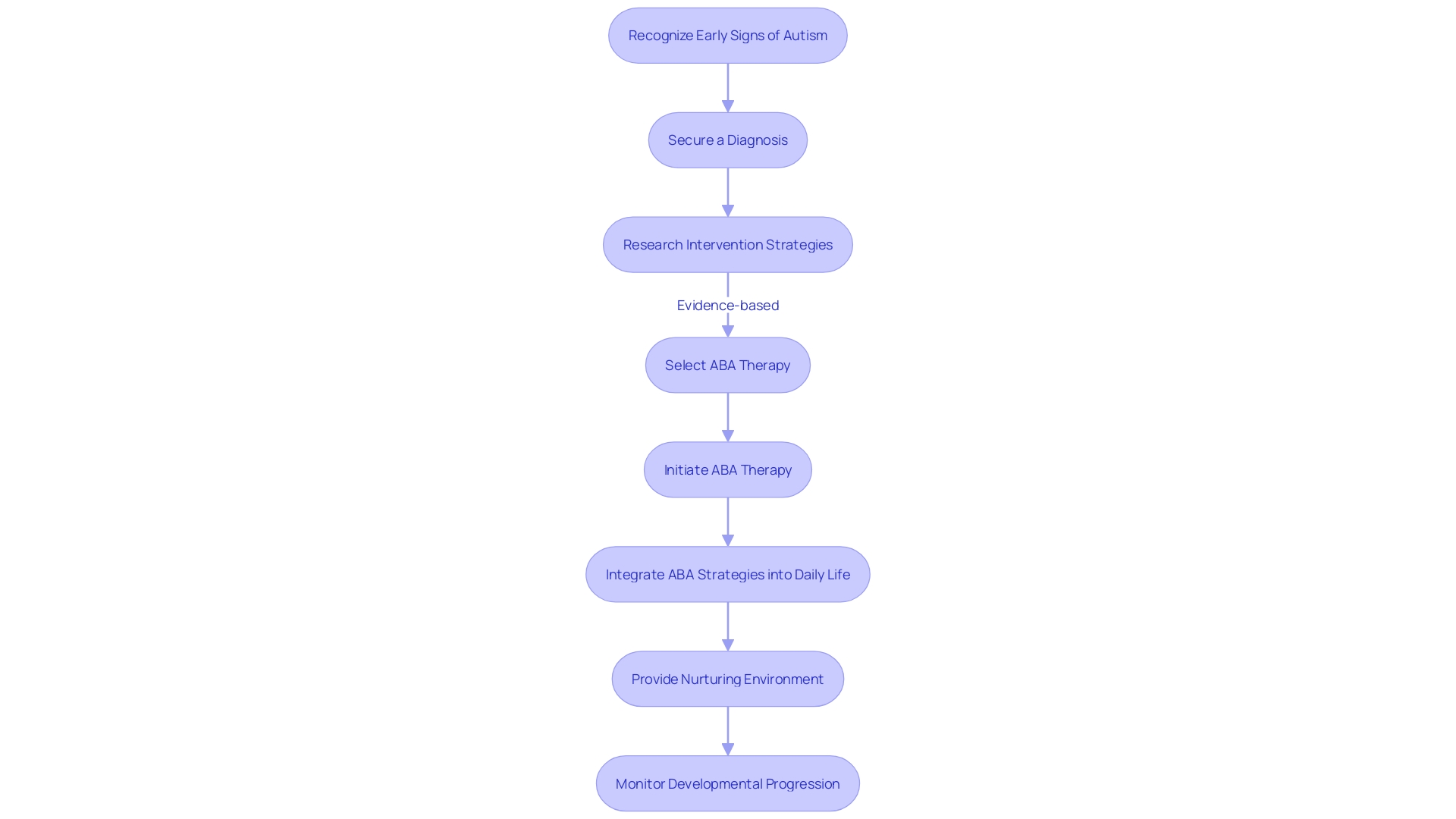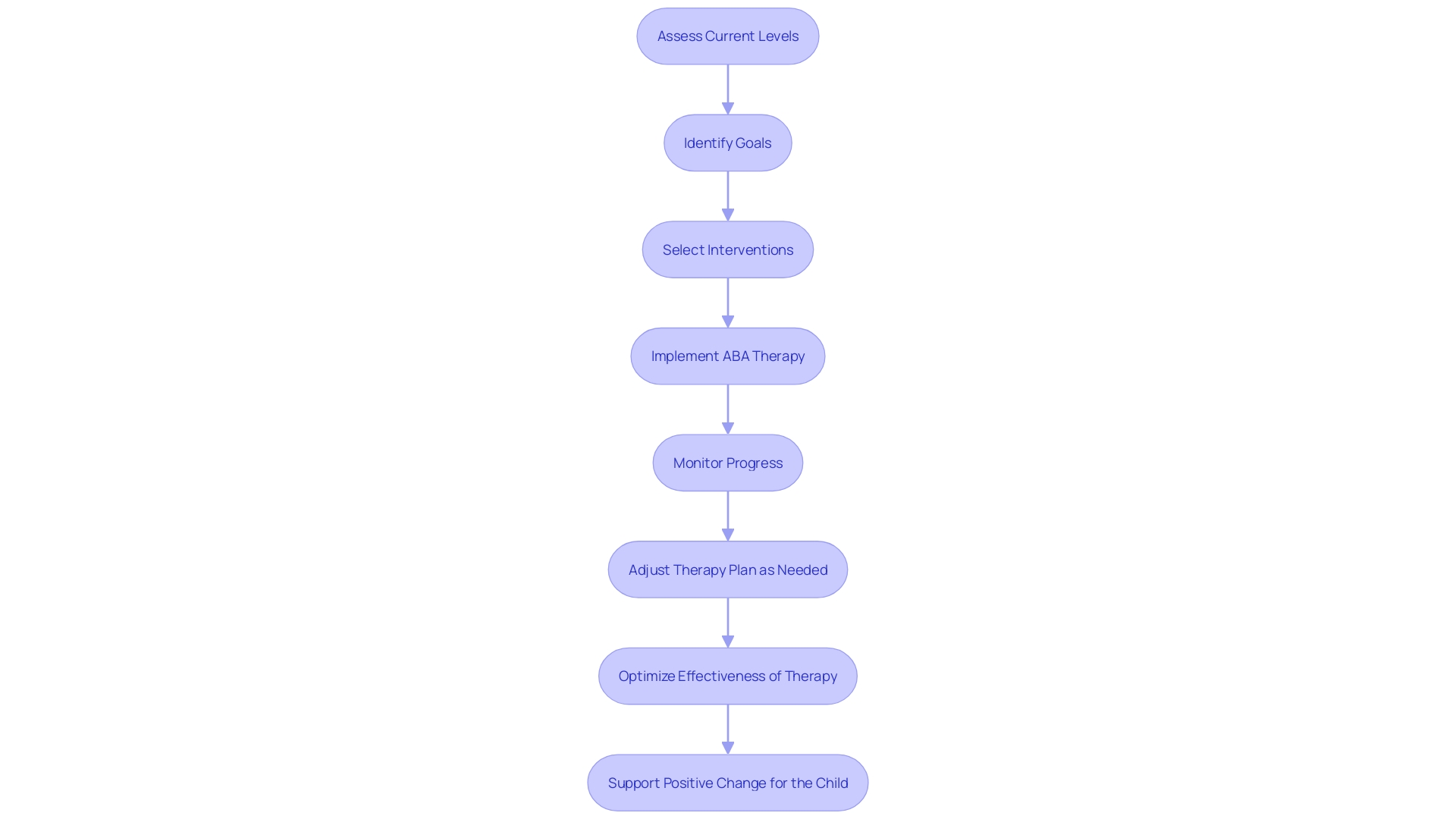Introduction
Applied Behavior Analysis (ABA) stands as a beacon of hope for those navigating the complexities of autism spectrum disorder (ASD). This revered therapeutic method employs the principles of learning theory to not only understand behavior but to sculpt it into positive growth.
With approximately one in every ten children affected by learning disabilities (LDs), ABA's significance cannot be overstated. In this article, we will explore the various strategies and interventions within the realm of ABA therapy and how they can empower parents to support their children's well-being and development. From comprehensive early intervention techniques to naturalistic developmental behavioral interventions, intensive individualized methods, and more, we will provide guidance and resources to help Parent Advocates navigate challenges and ensure the well-being of their children.
Understanding Applied Behavior Analysis (ABA)
Applied Behavior Analysis (ABA) stands as a beacon of hope for those navigating the complexities of autism spectrum disorder (ASD). This revered therapeutic method employs the principles of learning theory to not only understand behavior but to sculpt it into positive growth. With approximately one in every ten children affected by learning disabilities (LDS), ABA's significance cannot be overstated.
Contrary to the misconceptions about intelligence levels of children with LDs, these bright minds are equipped with the intellect needed to excel; they simply process information through a different wiring in their brains. ABA therapy is customized to cater to these unique cognitive pathways. By breaking skills into achievable steps, it makes learning accessible, and by harnessing the power of positive reinforcement, it encourages beneficial behaviors, leading to the enhancement of social, communication, and adaptive competencies.
However, it's crucial to acknowledge that not all intervention studies on non pharmacological treatments, such as ABA, stand on solid ground. A critical lens reveals that a majority of these studies are marred by design flaws, compromising our ability to fully grasp their effectiveness, scope of change, and safety, as well as the engagement of pivotal community members. For several decades, voices within the autism community have urged for improved quality and reporting in research, underlining that ethical and respectful conduct towards individuals with autism is non-negotiable.
Comprehensive Early Intervention Strategies
Recognizing the early signs of autism and securing a diagnosis unlocks the gateway to impactful support through ABA (Applied Behavior Analysis) therapy. Initiating ABA therapy at the earliest stage possible significantly enhances its efficiency, helping children with autism establish a foundation for lifelong learning and growth.
This proactive approach aligns with cutting-edge research that prioritizes randomized controlled trials over quasi-experimental studies, ensuring that the interventions chosen are based on the most robust evidence available. In harnessing the power of current research, parents can confidently integrate ABA strategies into their everyday lives, creating a nurturing and stimulating environment that encourages their children's developmental progression.

Naturalistic Developmental Behavioral Intervention Techniques
Naturalistic Developmental Behavioral Interventions (NDBIs) are a subset of ABA therapy that focus on integrating therapy into natural, everyday routines and settings. This section will introduce parents and professionals to NDBIs and provide practical strategies for incorporating these techniques into daily life.
Topics covered may include incidental teaching, pivotal response training, and natural environment teaching. By utilizing NDIS, parents and professionals can create meaningful learning opportunities and promote generalization of skills beyond structured therapy sessions.
Intensive Individualized Intervention Methods
For children with autism, navigating the complex terrain of interventions requires an approach that's both personalized and evidence-based. Strategies such as Discrete Trial Training (DTT), structured teaching, and functional communication training stand out in their potential to mitigate challenging behaviors and encourage skills development. Significant strides have been made in research to evaluate these interventions, with randomized controlled trials now providing golden standards for gauging their effectiveness.
Such rigorous investigations inform clinicians, enabling them to recommend practices based on the most current, robust data. Interventions are not one-size-fits-all, and it's crucial to consider the intricate designs of studies evaluating their efficacy. Despite advancements, some research bears design flaws that obscure the full magnitude of the interventions' effects, their safety, and the extent of their impact on the autism community.
It's vital for parents and professionals to engage with this research critically. Over time, individuals with autism and advocates have been at the forefront of championing higher standards in intervention research, linking the integrity of these studies with profound respect for the autism community. By grasping the nuances of intervention research and adopting a hands-on, customized approach to interventions, adults in caregiving roles can set pragmatic goals, measure progress efficiently, and optimize the well-being and growth of their children.
Cognitive Behavioral Therapy for Emotional Difficulties
Children with autism may experience emotional difficulties, such as anxiety, depression, or difficulty regulating their emotions. This section will explore the integration of Cognitive Behavioral Therapy (CBT) techniques into ABA therapy to address these emotional challenges.
Parents will learn strategies for helping their child identify and manage emotions, cope with anxiety-provoking situations, and develop effective problem-solving skills. By combining ABA therapy with CBT techniques, parents can support their child's emotional well-being and overall development.
Parent-Mediated Intervention Approaches
Parents play a crucial role in supporting the progress of their child in ABA therapy. This section will highlight the importance of parent involvement and provide practical guidance on how parents can actively participate in their child's therapy.
Topics covered may include parent training programs, promoting generalization of skills at home, and collaborating with the therapy team. By becoming informed and proactive advocates, parents can maximize the benefits of ABA therapy and empower their child to reach their full potential.
Additional Therapies and Interventions
Integrating additional therapies with ABA therapy can greatly benefit children with autism by addressing a broader range of developmental needs. While research critically evaluating non pharmacological interventions highlights some design flaws making it challenging to measure their full impact, these therapies, including speech and occupational therapy, social skills development, and assistive technology, offer invaluable support in a child's progress.
It is essential for these integrations to be carefully considered and aligned with an understanding of their effectiveness and the respect due to each individual's unique experience with autism. With proper integration of these complementary therapies, parents can support their child’s treatment journey by enriching the therapeutic environment, thereby facilitating the child's communication, daily living skills, and social interactions.
Creating a Personalized Treatment Plan
Every child with autism is unique, and an individualized treatment plan is essential for maximizing their progress. This section will guide parents and professionals in creating a personalized treatment plan that addresses the specific needs of the child.
It will cover topics such as conducting assessments, setting goals, selecting appropriate interventions, and monitoring progress. By tailoring the treatment plan to the child's strengths and preferences, parents and professionals can optimize the effectiveness of ABA therapy and support positive change.

Conclusion
In conclusion, ABA therapy serves as a beacon of hope for children with autism spectrum disorder (ASD) and their families. By utilizing learning theory principles, ABA therapy shapes behavior into positive growth.
With approximately one in ten children affected by learning disabilities, ABA's significance cannot be overstated. Early intervention strategies are key in maximizing the effectiveness of ABA therapy.
Recognizing early signs of autism and starting therapy early establishes a foundation for lifelong learning and growth. Integrating current research and evidence-based practices empowers parents to confidently incorporate ABA strategies into everyday life.
Naturalistic Developmental Behavioral Intervention Techniques (NDBIs) offer an alternative approach within ABA therapy, integrating therapy into natural routines and settings. This promotes skill generalization beyond structured sessions, creating meaningful learning opportunities.
Intensive individualized intervention methods, like Discrete Trial Training (DTT) and structured teaching, provide personalized and evidence-based approaches. Critical engagement with research allows for a better understanding of intervention effectiveness, safety, and impact.
Customized approaches and practical goal-setting optimize the well-being and growth of children with autism. By integrating Cognitive Behavioral Therapy (CBT) techniques into ABA therapy, emotional difficulties can be addressed, supporting emotional well-being and overall development.
Parent-mediated intervention approaches emphasize the importance of parent involvement in ABA therapy. Active participation through training programs and promoting skill generalization at home maximizes benefits and empowers children to reach their full potential. Integrating additional therapies, such as speech and occupational therapy, social skills development, and assistive technology, provides invaluable support for children with autism. Careful consideration and understanding of the effectiveness of these therapies enrich the therapeutic environment and facilitate communication, daily living skills, and social interactions. Creating a personalized treatment plan, based on assessments, goals, appropriate interventions, and progress monitoring, optimizes the effectiveness of ABA therapy and supports positive change for each child's unique needs. In summary, ABA therapy, with its various strategies and interventions, empowers parents to navigate the challenges of autism. By staying informed, engaging critically with research, and adopting an individualized approach, parents can make a lasting positive impact on their child's life, promoting well-being and development.




